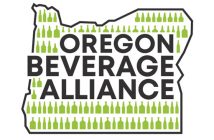The City Club of Central Oregon should be congratulated for bringing together a thoughtful and insightful process on what to do about the sediment building in Mirror Pond where thousands of people enjoy the benefits of river access on a daily basis.
With no particular agenda, Joe Eilers of MaxDepth Aquatics, Inc. (the company that conducted the hydroacoustic mapping of Mirror Pond in 2005. He is currently engaged by Portland General Electric and PacifiCorp Energy conducting work on the Clackamas and North Umpqua hydropower projects), laid out the options at a recent sold out City Club discussion admitting that several people were nervous about the forum (suggesting perhaps that there might be some entities in Bend who do have an agenda).
Eilers provided the technical options:
- First, Eilers doesn’t see the urgency in the decision. While there is sediment accumulation in any reservoir some things are working in Mirror Pond’s favor to keep the level of accumulation at its current level. (This conclusion leads us to believe we can work on a really creative long standing solution without panicking.)
- Full dredging could be done but we would be back to 80 percent full in 10 years. Eilers said you might as well buy a dredge, cause it’s not a long term course of action…he warned.
He mentioned partial dredging; something he called ‘designer dredging’ where we would build up parts of the pond to stabilize it, but use dredging to mold the way the river should go to reduce sediment levels.
- 3. Remove the dam…Eilers doesn’t see a huge difficulty in removing it, but it could cause trouble to the next dam down the river used for irrigation control…things get complicated in a hurry he noted…..we have the technical team and then we have the influential team…those who want it done their way. (A recent poll by the Old Bend Neighborhood Association might appear that people lean toward removing the dam, but this poll is both unscientific and unsubstantiated.)
Not only could the dam removal impact the irrigation control further down the river, but as
Whatever the solution one has to ask the pertinent question: who pays for it? Paying for public projects is never simple and Ryan Houston, executive director of the Upper Deschutes Watershed Council, says that typically a consortium of funders can be found. He believes the focus should be to get a sexy project designed and once you have that it’s relatively easy to find funding for exciting projects, which could include local, state, federal and improvement district collaboration.
Bend Mayor Jim Clinton’s conciliatory approach is noteworthy: “the way we think about rivers is now in a period of change, the consensus was a decade ago to keep Mirror Pond looking the way it does now. We’re left with no simple solution, so perhaps we need to think about what we want it to look like in the future.”
While several people in the City Club audience suggested a variable of solutions, the cost and effectiveness to do such things as siphoning, stock piling or selling the sediment don’t appear feasible.
Brooks Resource President & CEO Mike Hollern, who clarified that he has lived on the river for over 40 years, voiced his opinion that: the dam should stay, the river should stay level as it is and some dredging should occur. He believes that the smart scientist can come up with a solution.
If you came away with one conclusion at the end of the City Club forum it’s probably this: there’s no one single simple option. A palpable solution is to first to decide what we want Mirror Pond and the surrounding recreational properties, to many the icon of Bend, to be for the future.
Then look closely at applying creative options that might include designer efforts to move channels and change some part of the Pond, expand the park, expand some wetlands even create an island that would mitigate wet land and storm water problems.
In the meantime, the Mirror Pond Steering Committee is the ultimate decision-making authority on all aspects of the Mirror Pond Sedimentation and Enhancement Project. It oversees the RFP process including evaluation of proposals and final consultant selection and oversees Project Manager Jim Figurski and his management of the project. See www.mirrorpond.info/mpsc.
The Committee is slated to present alternative project designs for the public to review near the end of April. The MPSC is comprised of five stakeholders: City of Bend, Bend Park and Recreation District, Pacific Power, William Smith Properties and Bend 2030.
Mayor Clinton sums it up with a positive: we can look at this as another problem or an opportunity to restore and retain the values that we have for the Pond and come together as a community.




